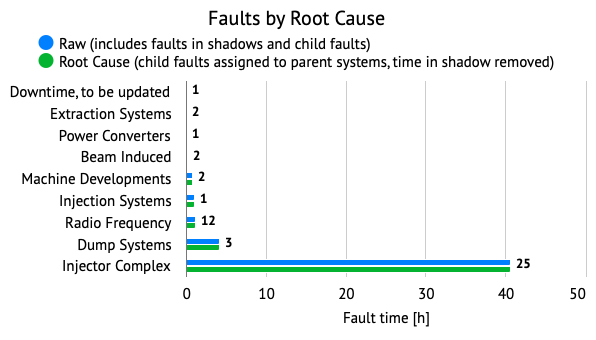
The agenda for this meeting is based upon user schedule 1.8.0, please cf. here. Please note the current injector schedule which contains information about MDs, Technical stops, etc. and can be found here.
Next user meeting:
For week 35 on Thursday August 31st, 2023 10:30 CEST
Meeting room: 874/1-011 (CERN)
Week 36 : User meeting will be moved to Wednesday due to CERN holiday on Thursday (J.G.)
Thanks a lot to Martin Jaekel and Dragoslav Lazic for ensuring the Physics Coordination
PS and SPS Physics Coordination:
August 15 to August 20: Dragoslav Lazic
August 20 to August 23: Martin Jaekel
August 24 - August 31 : Barbara Holzer
September 1 - September 6 (16:00): Martin Jaekel
September 6 (16:00) - onwards: Barbara Holzer
EURO-LABS TA:
Email to all requestors have been sent out, please wait for Martin Schwinzerl’s return for the replies to your inquiries.
Schedule version 1.8 is fairly similar to the version 1.7.1 except for the addition of LHCb + SND run in H8 and the parasitic HERD run in parallel to the CMS HGCAL run in H4.
Dedicated MD this week Wednesday still unclear. HighRadMat has not taken data yet, and the MD migth need to be moved another week. Decision will be taken Tuesday late afternoon. Update Tue 14h : the MD will take place as HiRadMat has still problems. They will continue after the MD on Wednesday.
Ion beam commissioning in SPS, after HighRadMat has finished. To be rescheduled.
Week 34:
Week 35 :
Week 36 :
No wobbling changes requested
Intensities:
T2 = 50
T4 = 35 to 37 / target values is T10 = 22
T6 = 15 now, 50 on Monday

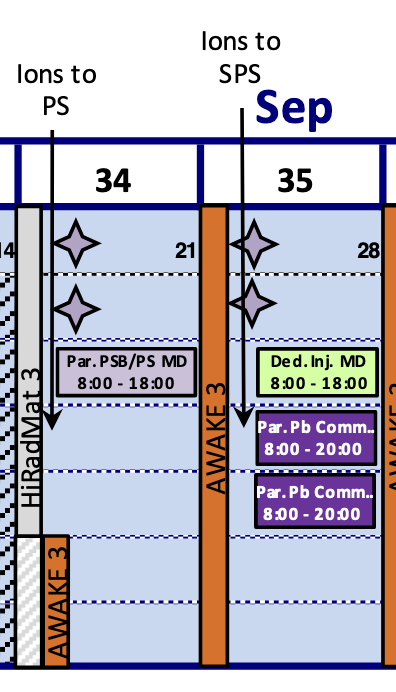
Physics progressing well:
Protons excellent.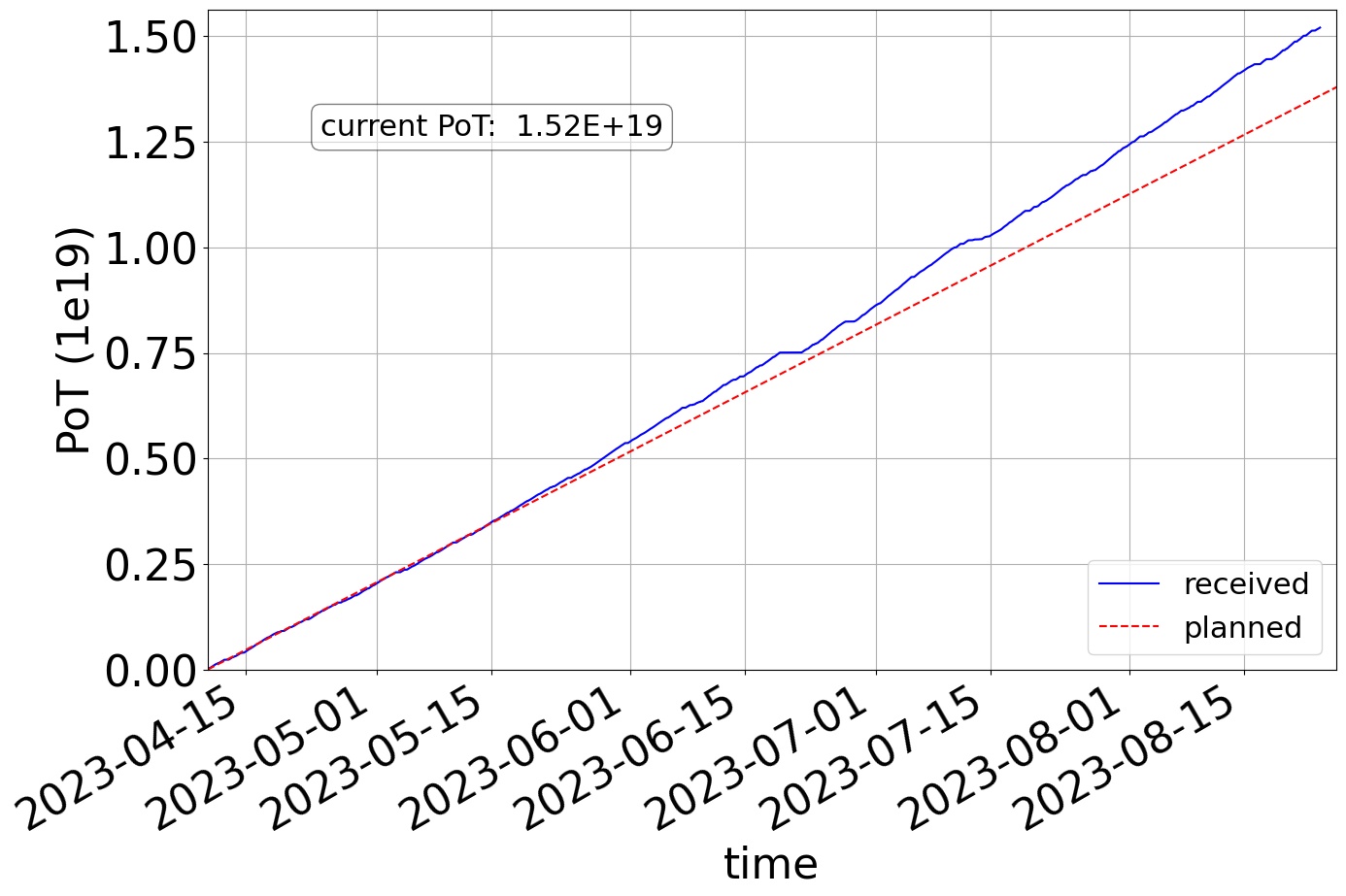
General : On Monday evening a water pump failure in building 355, pump P101. cut all magnets in EAST. piquet has to intervene for the pump. (~45min downtime)
T09: Smooth operation.
T10: good operation.
T11: No user.
Good week, no issue with operation. Weekly intensity level close to the target value (1.95e16 p/w, see plot below) lower of previos three weeks. Beam alignment and center on both X- and Y-axis, less good than previous weeks on both axes (number of spills centered within +/- 2mm): 78% [was 91%] on the horizontal and 89% on the vertical plane [was 97%] respectively.
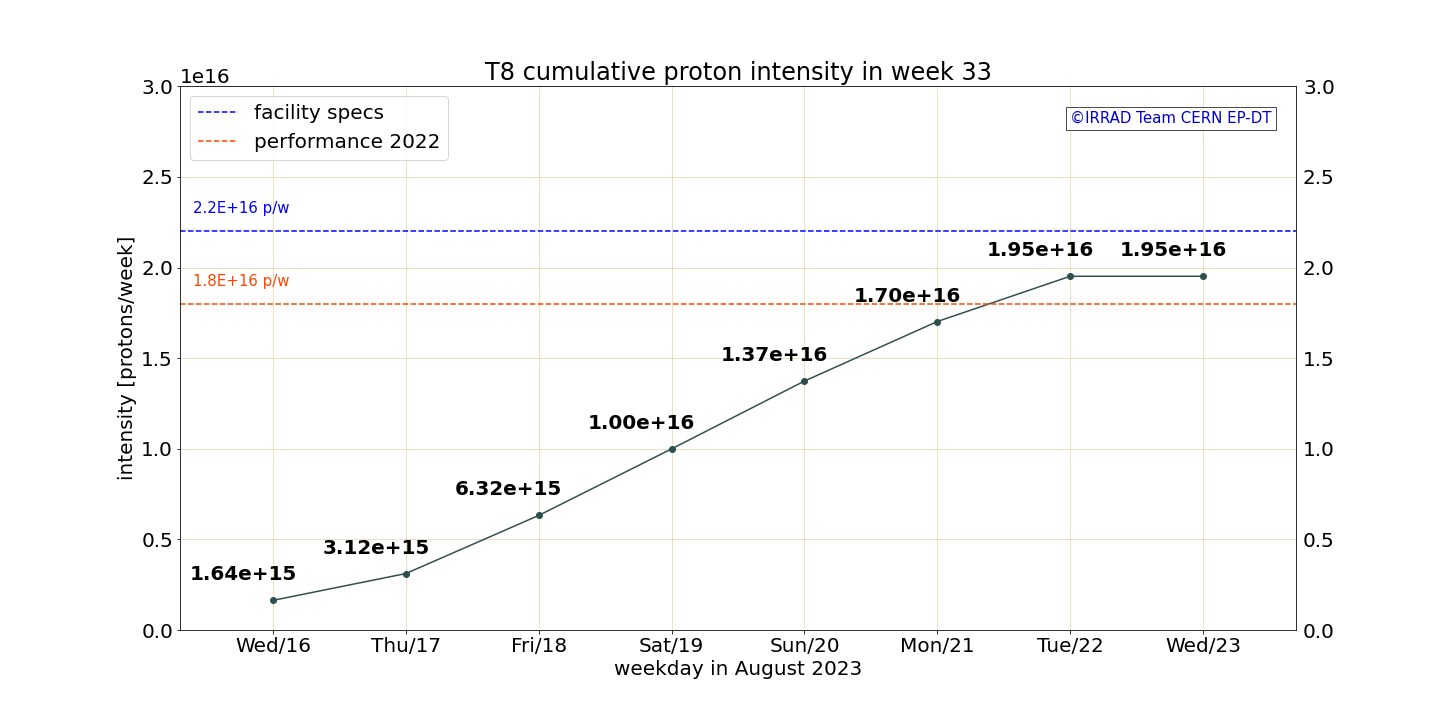
During the access on Wednesday, we exchanged the dosimetry and replaced samples for most of the long-term users: TE-MSC [including N2 experiment], ATLAS ITk Pixel [scanning table]. New experiments for SY-BI and CMS Pixel. In CHARM we modified BE-CEM and installed Cryogenics and BLM setups. Beam back at ~15:00, re-steering needed, good beam from 16:00 onwards.
Upcoming access, next week. In the afternoon when access is finished (and until late evening) CHIMERA/HEARTS ion MD with beam propagated downstream to T8. In the shadow of the access, East Area cooling pump intervention by EN/CV.
The ENUBET data taking is ongoing. We completed the installation of the apparatus on saturday. At the beginning of the data taking we experienced issues with the DAQ and, therefore, we tested the detector response using only two out of 16 electronics boards. This was enought to check the data reconstruction chain and ancillary detectors. Over the weekend we were able to acquire 8 boards and we positioned there to cover the first half of the detector. We thus
and we are currently performing the energy scan at 100 and 200 mrad. We thus plan to complete the basic measurements today and do the same measurements for the other half of the detector on Thu-Sat. We also plan a few special runs on Sun-Mon (pileup studies) to complete the data taking.
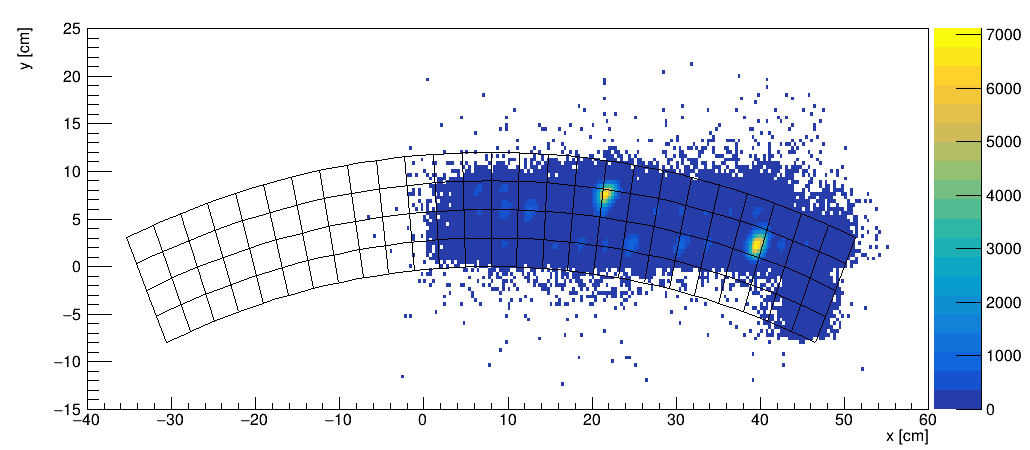
The HERD collaboration will test a scaled-down prototype of the full apparatus. The main objectives will be to:
Beam requests consist of high-energy (15 GeV?) muons and protons, and electrons ranging from the lowest to the highest possible energies.
Equipment requests include moving tables (DESY and XSCA already agreed), tables for ancillary equipment, a rack. We plan to make use of some of the beam line instrumentation, namely a scintillator and a Cherenkov detector for vetoing the pion triggers in electron beams (TTl output needed). A beam line survey has also already been arranged.
Measurement completed on Tuesday morning as planned.
Thanks a lot to Maarten for beam optimization.
The aim of the test is the performance study of a prototype for the dual-radiator ring-imaging Cherenkov detector at the future EIC.
We finished the installation yesterday afternoom and took the first data during the night. We are now preparing alternative beam configurations (focusing, energy, charge) and optimizing the setup.
The plan foreseen the comparative usage of various aerogel samples (different producer, refractive index, size) with and without the simultaneous imaging of the gas radiator.
The MPGDCAL R&D focuses on the development of an hadronic calorimeter with micropattern gaseous detector as active layer.
The current technology under test are pad micromegas, µRWELL and RPWELL; a first test beam has been performed at SPS and a similar setup will be used for T10.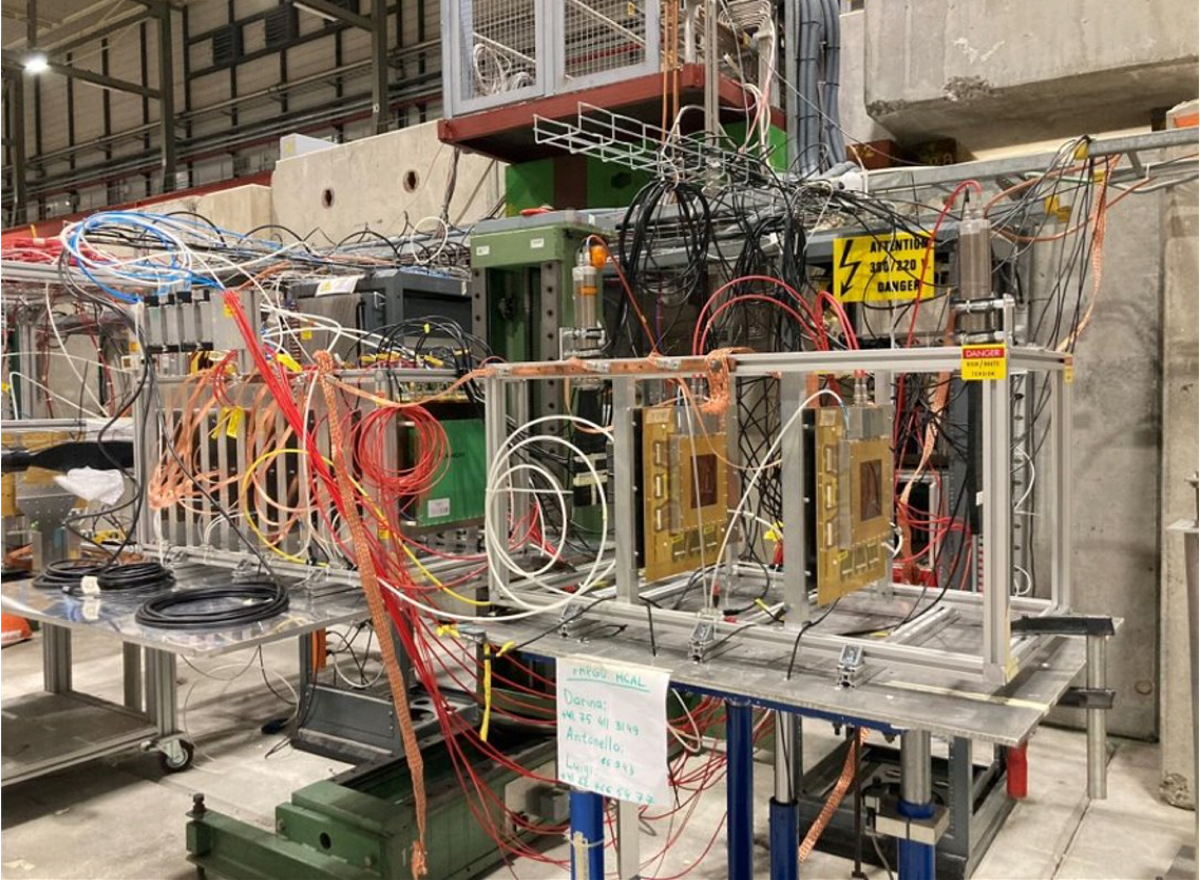
Setup: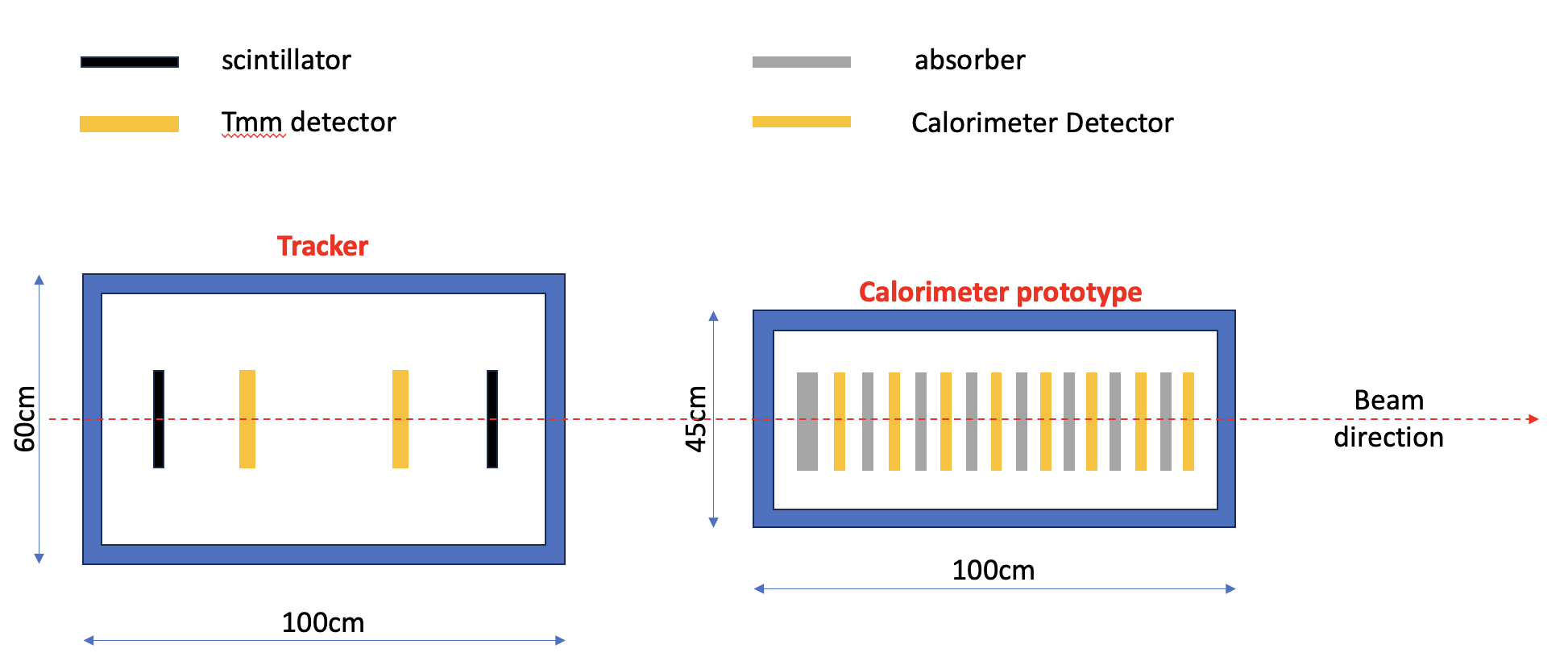
Tests:
ISIEC submitted yesterday (ID: 1026); safety visit planned for 5pm.
Gas request already done (RQF2384312).
Issues with the TPSG4 setup, many accesses necessary but a plan has been laid out for today.
Expect to start the proton run on Saturday morning, after HiRadMat.
H2: Normal operation. Need ~2h without beam in EHN1 to perform the second part of the “cross talk” test between the lines Propose to do it on Tuesday morning (to be confirm by EPC)
H4: Issues with GOLIATH magnet current ramp-up, followed up by SY-EPC team
H6: No issues last week. Higher intensity week this week so PPE146 and PPE156 linked together (access and CESAR). Access system was changed on Wednesday morning and will change back next Wednesday.
H8: No issues, good operation.
M2: Commissioning of MUonE setup planned with low intensity/no beam until Monday for which 15 units on T6 is ok. Final beam tuning to start on Monday with 50 units on T6.
P42/K12: Normal operation. Some issues with the MNP33 spectrometer magnet that will need to be followed up. Current oscillations seem to have gone after exchange of regulation card.
Despite some data taking stops due to beam unavailability in NA, the amount of measurements and of interesting results we obtained exceeded our initial expectations, also owing to the prosperous 3-spill cycle that has been available during the nights and the weekend. More details on the results we obtained can be found in the slides on Indico. We thank a lot Nikos and Bastien for providing live support in the beam tuning at essentially all times.
Installation successfully completed. Safety visit done. Ongoing preliminary runs to commission the DAQ.
Thanks to Bastien and Nikos for the help setting up the beam.
Start of data taking expected this afternoon. First, planning to test time resolution of several different readout configurations of SpaCal with Tungsten absorber and Polystyrene scintillating fibres. Then (Monday), energy resolution of large-size SpaCal prototype.
Slightly reduced number of set-ups with ATLAS-MM and CMS-GEM already finished measurements last beam time.
List of userers participating : ATLAS-MPI, ATLAS-RPC (?), CMS-CSC (2 setups), CMS-RPC (2 setups), EP-DT2, RE21/CBM, RPC Ecogas. ATLAS-TGC migth join for week two if setup gets ready.
5 Setups installed and running. Started early morning, very good swap with FAZER (thanks to FAZER team), remarkable work from Michael Lazzaroni’s teams (crane, tables and services). First week: mostly muons. One group leaving at the end. RP clearance to be organized.
Second week: Three groups coming, safety visit planned for Wednesday 30/9. Run with Goliath is planned for the second week in coordination with GIF++.
We also thank David Jaillet’s team for the prompt support for the flammable gas.
Extension of the cooling system for 3(4) quads worked well but took much longer than anticipated. We enccountered afterwards several other problems: connectivity; issues with one sample; desynch. Some data were taken with one quad DUT but only quite little and of unknown data quality.
High-rate week with pion beam.
High-rate measurement programme for final test-beam week in 2023:
Smooth startup thanks to efficient beam tuning by Laurie. Reaching 5.5E6 / spill in scintillator 532 in H6B.
A/C in control room not working, someone from CCC already came to check, should be fixed by today.
Goal of the test: measure the spatial resolution of the first prototypes of the ~ 1m long microstrip silicon sensors we’re producing for the upgrade, on the International Space Station in 2025, of the AMS-02 apparatus. Two planes will be installed on the new “layer” (L0) to be installed on top of the apparatus: one is to measure the bending direction (given the uniform magnet) and one is at 45°

Beam Test setup:
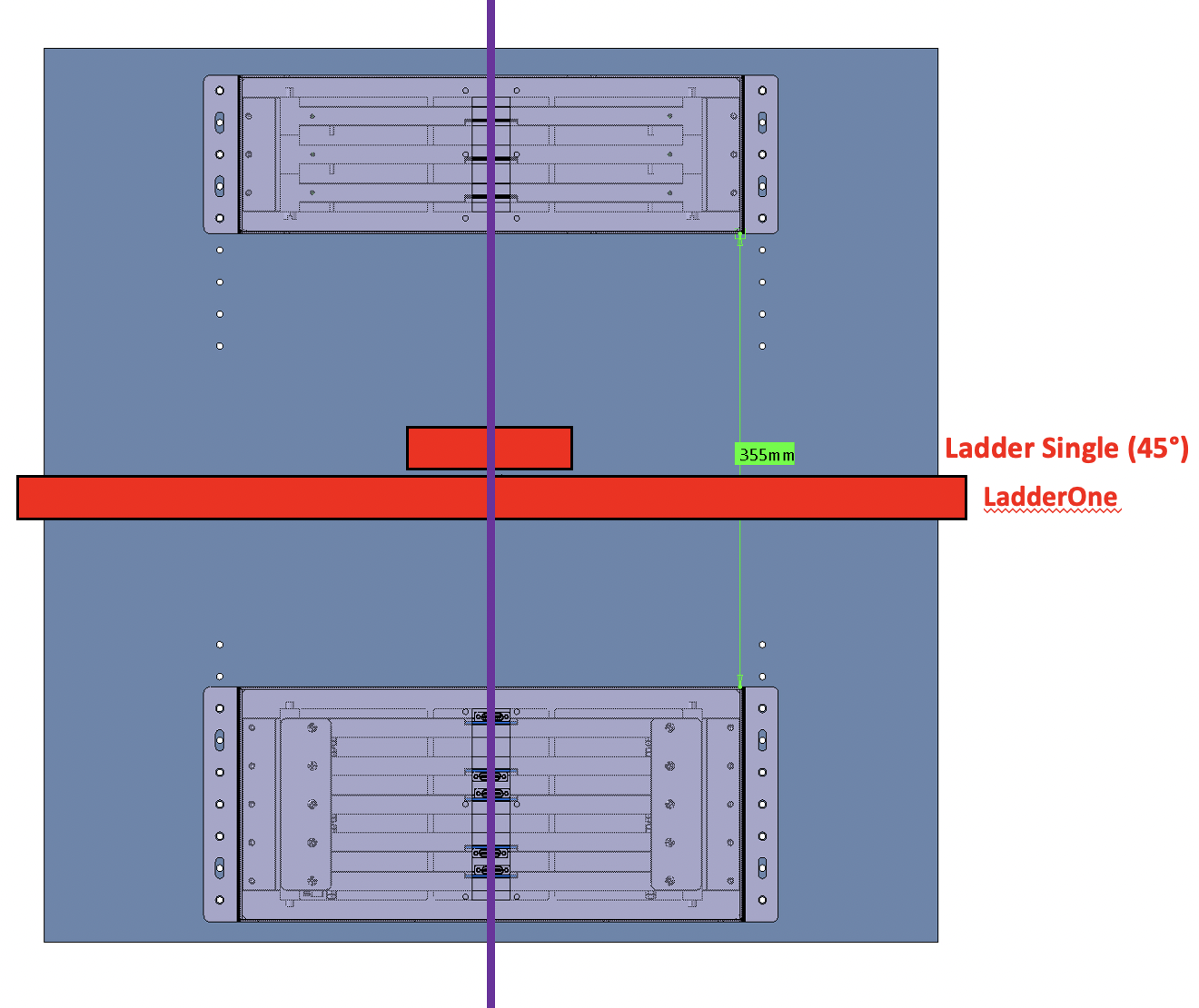
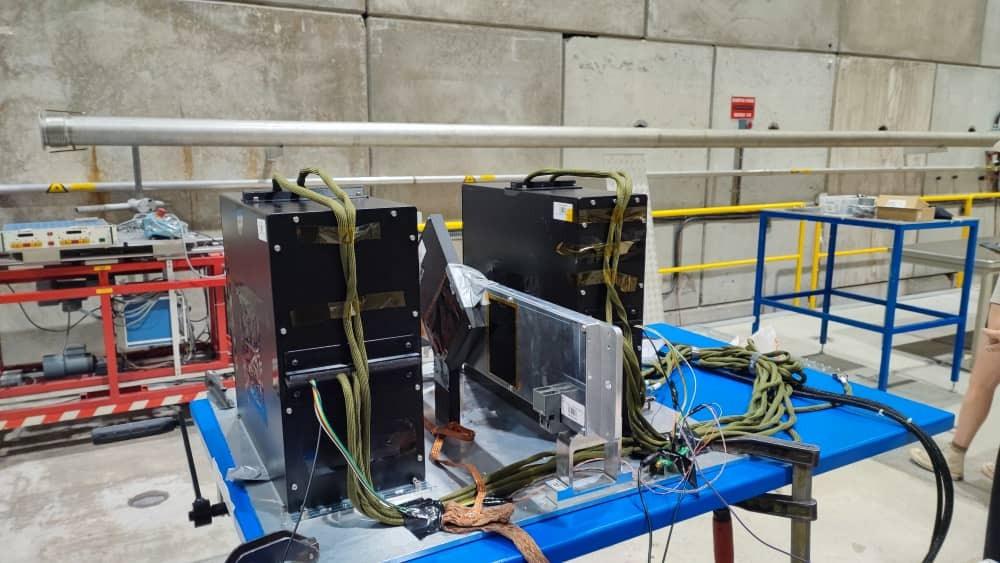
we were expecting 6 days ×
2 spills at 1kHz
we got 4 days ×
3 spills at 1kHz
Marteen gave a very good muon beam for us: very wide so to illuminate almost completely our 10 ×
10 cm^2 silicon sensors:
also the hadron beam was good, even if too narrow for us:
we collected more than 100 M triggers
we took all the data needed for the test program target:
trigger-to-hold scan (muons and hadrons)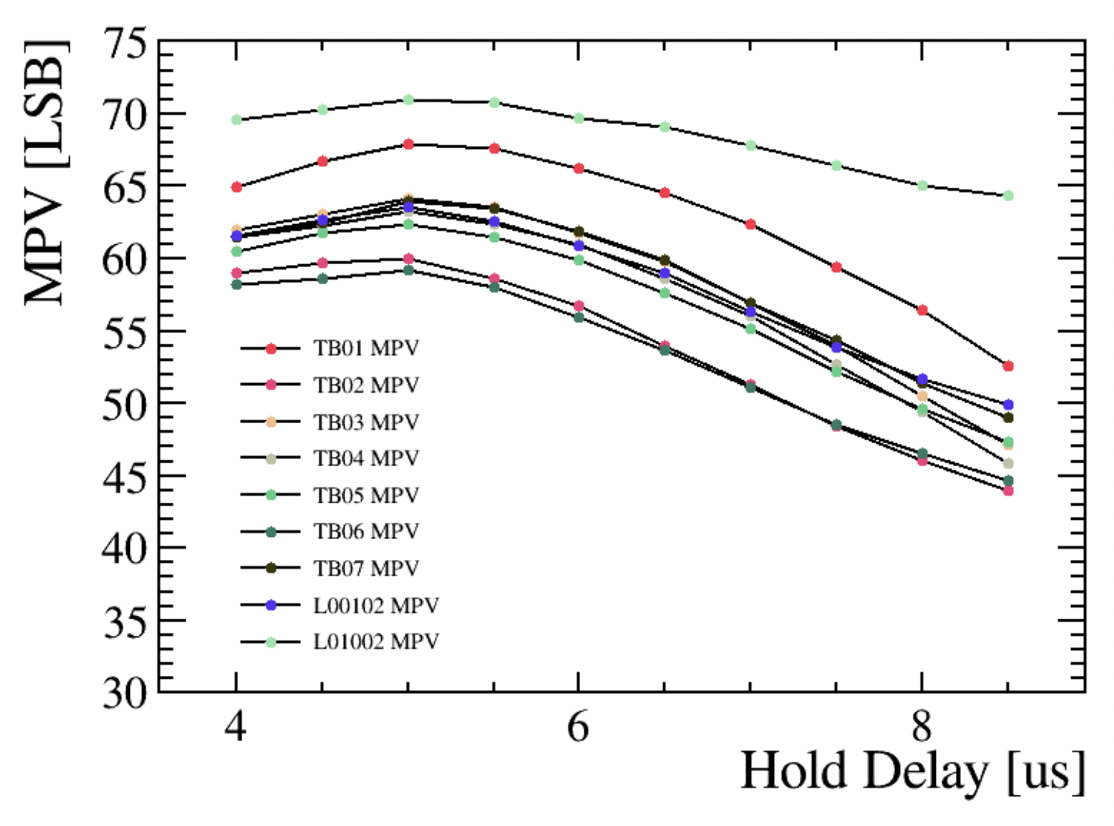
“orthogonal” runs on differents sensors of the 10 sensors (daisy-chain) long microstrip sensor for spatial resolution (data to be properly analyzed)
inclined (0°, 7.5°, 15°, 30° and 40° - beam entering one strip and exiting below another) runs
we had the opportunity to test additional thing:
See you in October!
VELO TimePix4 team installed successfully in PPE 138.
1 week of beamtime scheduled. Standard 180GeV/c pion beam.
We would like some high-rate runs or wider beam. We are currently coordinating with the other users and the beam expert.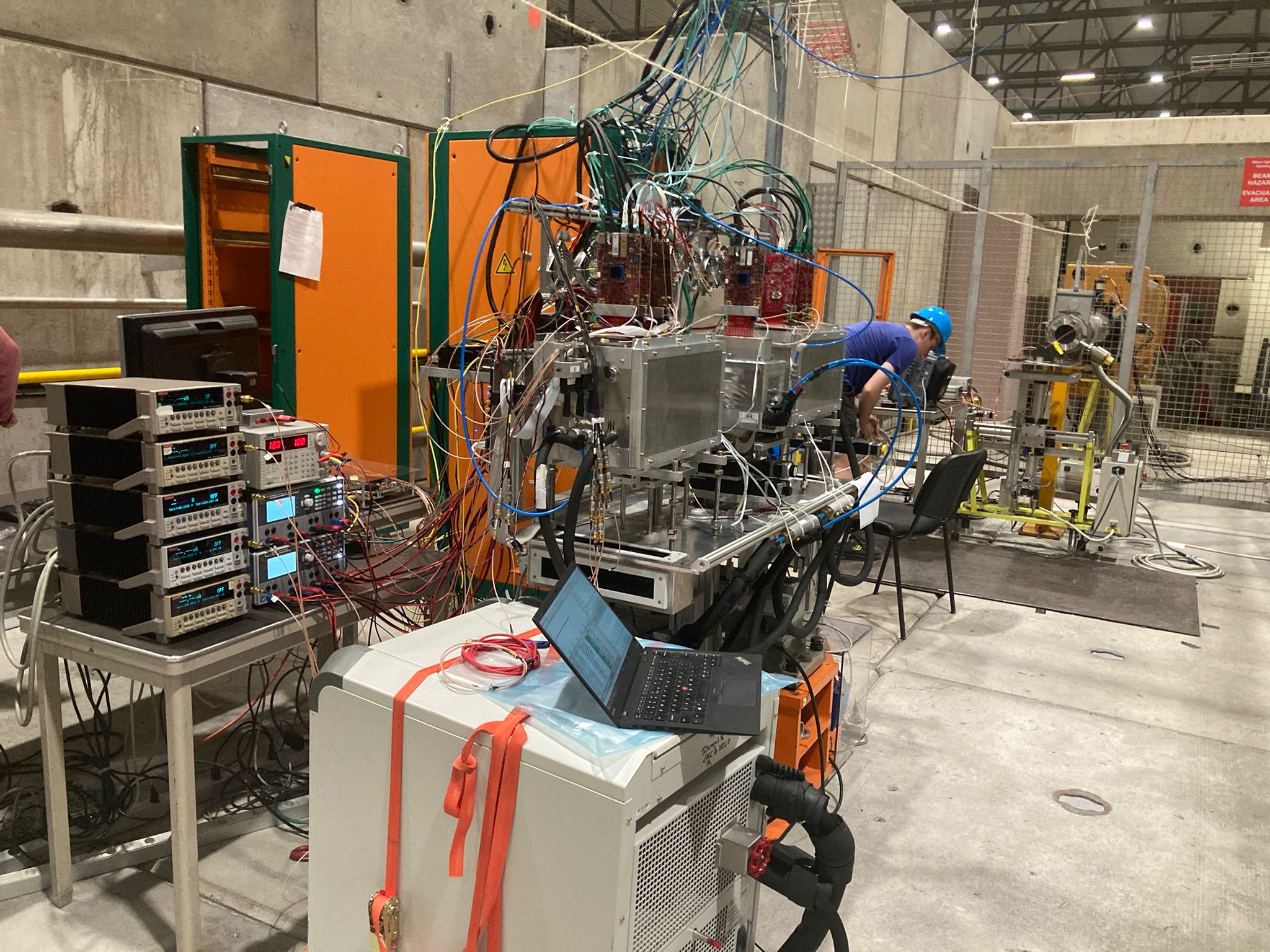
Tracker installed successfully in PPE 128.
Characterization of bent crystals with 50 urad and 7000 urad bending angle. First crystal with 50 urad characterized successfully during first day of data taking (Thu 25 Aug). Continuing data taking to with 7000 urad crystals.
We would like low intensity and narrow beam. We will coordinate with LHCb (main user).
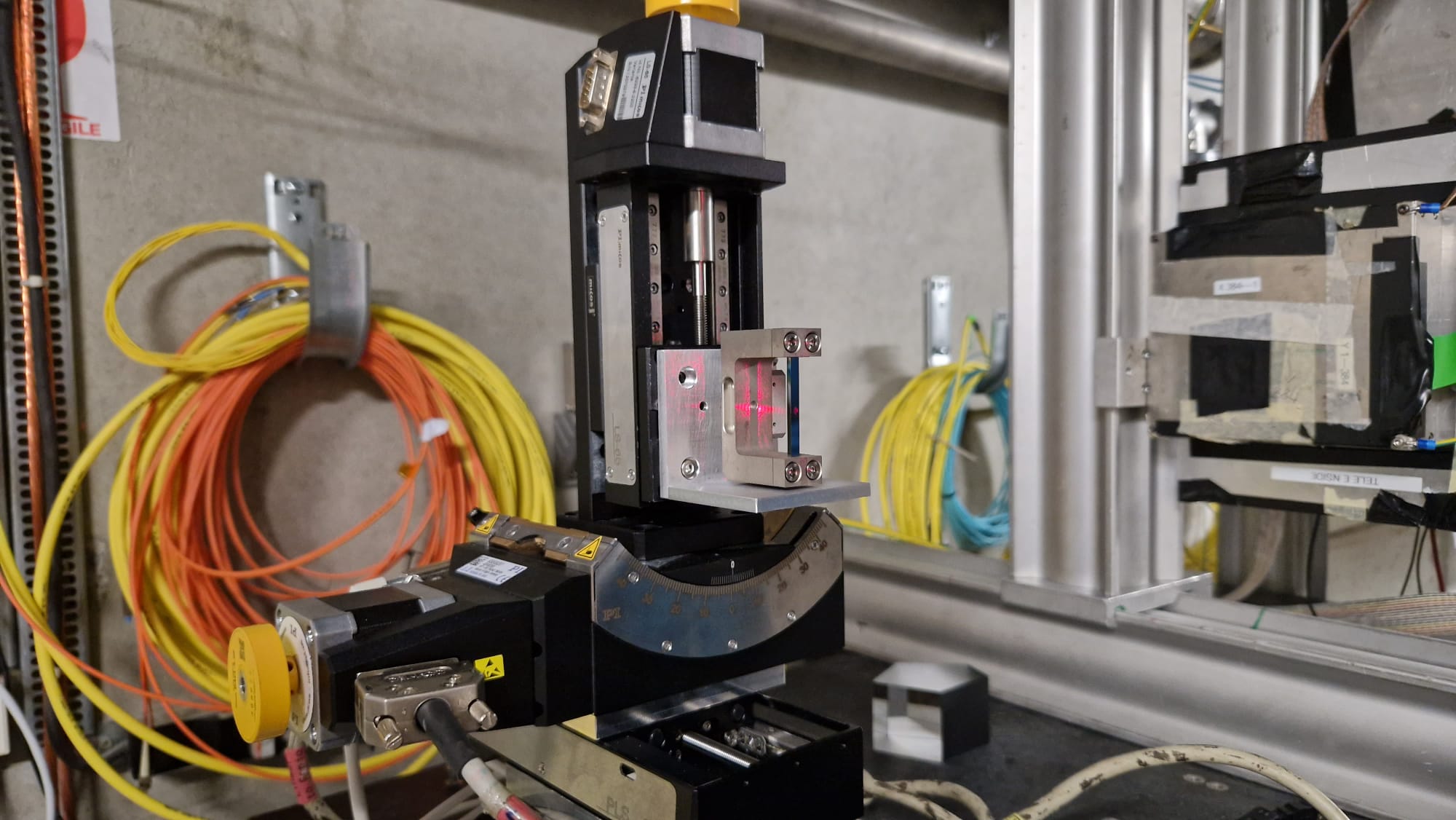

We are ready to move the table back in the area on Wed. Fence removal already planned by Michael and Sylvain, in the morning.
ISIEC submitted yesterday. Apologies for the late submission.
The setup and installation of electronics is mostly completed.
We will use the same configuration as in the July run:
• 3 Cherenkovs (perhaps would be useful to evaluate a direct connection to our CR with a splitter on the PMT instead of the usual routing?)
Gas: helium the first week, change to CO2 second week.
• Trigger scintillators:
we have our two on the line we need the routing of (XSCI 042543 via the technical barrack)
We have dedicated cable routed from XSCI.042.403, XSCI.042.410 from last year, check connectivity.
• 2 Wire Chambers
“standard in 158”, and user operated Wire chamber downstream the Morpurgo. Not sure of the status.
• Vacuum chamber for electrons
Beam files as in the July Run. Some small tuning/test for electrons at 10 GeV is required and being discussed already with Maarteen and Anna.
(Motivations and more info at this link: presentation in the June 29 meeting: https://indico.cern.ch/event/1300895/contributions/5469992/subcontributions/432887/attachments/2675665/4639928/TileTB_plans_SPSUM_290623.pdf)
We have performed runs with 160 GeV/c muons at various angles wrt the beam (−10∘..10∘
). These runs are essential for position resolution studies due to homogenious illumunation of the whole detector surfaces (the beam was >5cm FWHM). We did tests investigating a higher rate capability (≈1.9kHz instead of ≈0.75kHz
) of data taking with our spectrometer. Tested the usage of an external clock provided to readout boards for hardware synchronisation. Overall, the beamtest was successful. We have taken huge amount of data due to the 3-spills per cycle mode available during the nights and weekend. Big thanks to SPS and North Area crew for being very helpful during our (de-)installation and measurements.
We had a successful data taking week for several studies:
Plan for the coming days: